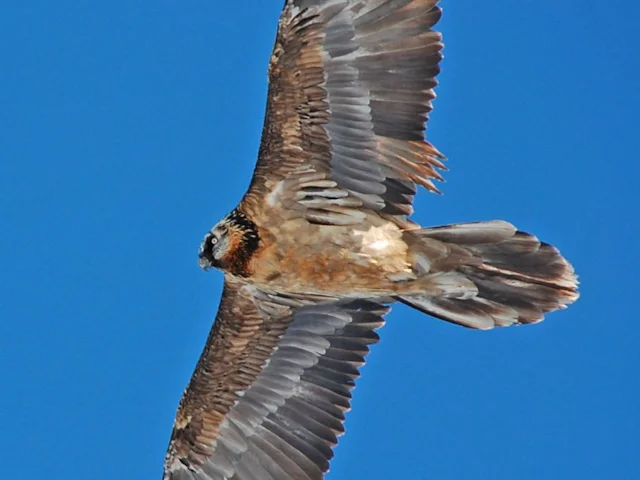Conservation really does help, it seems
b92c6f53-f6de-44ec-b1ce-a81778c52b82

While studies have shown that around 60 per cent of Europe's wildlife has declined in recent decades, certain iconic species have increased in number.
A study into the comeback of formerly threatened species in Europe by the Zoological Society of London (ZSL) has been joined by two other organisations in the hope that the research can help fuel future conservation success stories.
BirdLife International and the European Bird Census Council (EBCC) have joined the study, commissioned by Rewilding Europe in 2011, which looks at iconic mammal and bird species covering different geographical regions and habitats in Europe.
The study’s main goal is to generate a scientifically sound overview of changes in abundance and distribution of wildlife species that have shown a considerable comeback in Europe, during the period 1960-2010. This can provide important lessons for future conservation of these and other species.
According to the 2012 Living Planet Report, the years 1970 to 2008 saw an average increase in animal population size of six per cent in the Palearctic biogeographical region (essentially Europe, north Africa and the Middle East), in contrast to an overall decrease in biodiversity in tropical regions.
One explanation put forward is better environmental protection, but recent changes in land use with abandonment of farmland, reduced hunting pressure and higher productivity of many ecosystems due to more input from human activities (for example eutrophication of lakes and nitrogen deposition from the air) could also play an important part.
Apart from an important ecological role, the studied species have an economic value in wildlife based tourism. Wildlife comeback also poses new challenges in terms of wildlife management, allowing populations to reach natural densities and natural dynamics.
The study highlighted species such as Roe deer, Moose, Wild Boar, Chamois, Ibex, White Stork, Barnacle Goose, Common Crane and White-tailed Eagle having their highest populations for decades if not centuries. With active protection and reintroductions, other species have also benefited including European Beaver, Otter, Eagle Owl, Peregrine Falcon, Lammergeier and Black Vulture. Even the endangered Iberian Lynx has started to recover marginally, though long-term prospects remain unclear.
A first draft document covering 18 mammal species has been prepared by ZSL and is now being peer-reviewed by species specialists from all over Europe. BirdLife and EBCC are now analysing data to describe and analyse the comeback of some 20 bird species that have shown a significant recovery over the last 40 to 50 years.
The wildlife comeback study will be a landmark report to be launched at the end of September 2013 during a seminar in London. The findings of the study will also be presented at the 10th World Wilderness Congress (WILD10) in Salamanca, Spain, on 4 October.
A study into the comeback of formerly threatened species in Europe by the Zoological Society of London (ZSL) has been joined by two other organisations in the hope that the research can help fuel future conservation success stories.
BirdLife International and the European Bird Census Council (EBCC) have joined the study, commissioned by Rewilding Europe in 2011, which looks at iconic mammal and bird species covering different geographical regions and habitats in Europe.
The study’s main goal is to generate a scientifically sound overview of changes in abundance and distribution of wildlife species that have shown a considerable comeback in Europe, during the period 1960-2010. This can provide important lessons for future conservation of these and other species.
According to the 2012 Living Planet Report, the years 1970 to 2008 saw an average increase in animal population size of six per cent in the Palearctic biogeographical region (essentially Europe, north Africa and the Middle East), in contrast to an overall decrease in biodiversity in tropical regions.
One explanation put forward is better environmental protection, but recent changes in land use with abandonment of farmland, reduced hunting pressure and higher productivity of many ecosystems due to more input from human activities (for example eutrophication of lakes and nitrogen deposition from the air) could also play an important part.
Apart from an important ecological role, the studied species have an economic value in wildlife based tourism. Wildlife comeback also poses new challenges in terms of wildlife management, allowing populations to reach natural densities and natural dynamics.
The study highlighted species such as Roe deer, Moose, Wild Boar, Chamois, Ibex, White Stork, Barnacle Goose, Common Crane and White-tailed Eagle having their highest populations for decades if not centuries. With active protection and reintroductions, other species have also benefited including European Beaver, Otter, Eagle Owl, Peregrine Falcon, Lammergeier and Black Vulture. Even the endangered Iberian Lynx has started to recover marginally, though long-term prospects remain unclear.
A first draft document covering 18 mammal species has been prepared by ZSL and is now being peer-reviewed by species specialists from all over Europe. BirdLife and EBCC are now analysing data to describe and analyse the comeback of some 20 bird species that have shown a significant recovery over the last 40 to 50 years.
The wildlife comeback study will be a landmark report to be launched at the end of September 2013 during a seminar in London. The findings of the study will also be presented at the 10th World Wilderness Congress (WILD10) in Salamanca, Spain, on 4 October.

